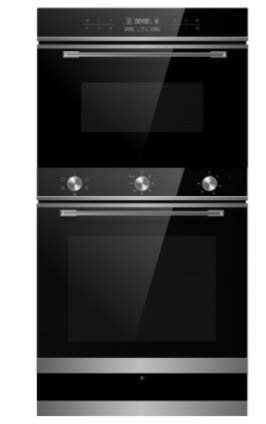Understanding Ovens and Hobs: A Comprehensive Guide
Cooking has actually come a long method because the days of open flames and rudimentary cooking methods. Today, ovens and hobs are at the heart of modern-day cooking areas, providing versatility, performance, and a variety of cooking alternatives. Whether you are an amateur cook or a skilled chef, understanding the distinctions, functions, and functions of these appliances is crucial for making the most of cooking capacity. This post breaks down the numerous kinds of ovens and hobs available on the marketplace, their functionalities, and how to pick the ideal home appliances for your kitchen.
What is an Oven?
An oven is an enclosed space developed for heating and cooking food, offering numerous approaches such as baking, roasting, and broiling. Built In Oven On Sale can be found in numerous types, each serving unique cooking choices and requirements.
Kinds of Ovens
Standard Ovens:
- Use gas or electrical power for heating.
- Typically include a heating element at the top and bottom.
- Perfect for basic baking jobs.
Convection Ovens:
- Use a fan to circulate hot air, promoting even cooking.
- Ideal for baking, roasting, and reheating.
- Lowers cooking time and boosts taste.
Steam Ovens:
- Utilize steam to prepare food while keeping moisture and nutrients.
- Excellent for health-conscious cooking, such as veggies and fish.
Microwave Ovens:
- Use electro-magnetic radiation to heat food rapidly.
- Best for reheating leftovers or cooking basic meals.
Wall Ovens:
- Built into the wall, saving area in the kitchen.
- Available in numerous configurations, including single or double ovens.
Key Features of Ovens
- Temperature Control: Precision heating for various baking and cooking processes.
- Self-Cleaning Options: Some designs have self-cleaning modes that use heats to burn food residue.
- Smart Features: Wi-Fi connectivity allows remote pre-heating, tracking, and dish management by means of smart devices.
What is a Hob?
A hob is a cooking surface, often described as a stove or cooktop, where cookware is positioned for heating. Hobs are readily available in various materials, sizes, and heating methods, dealing with varied cooking requirements.
Kinds of Hobs
Gas Hobs:
- Utilize gas burners for direct flame cooking.
- Offer accurate temperature level control and are favored by numerous professional chefs.
Electric Hobs:
- Use electric coils or smooth tops.
- Some designs are geared up with induction technology, offering rapid heating through electromagnetic energy.
Induction Hobs:
- Cookware must be made from magnetic products.
- Very energy-efficient, offering fast heat and decreasing burn threats.
Ceramic Hobs:
- Feature a glass-ceramic surface with heating elements underneath.
- Easy to clean however can be less energy-efficient than induction hobs.
Secret Features of Hobs
- Burner Configuration: Varies from two to six burners, depending on design and size.
- Power Levels: Multiple settings enable higher accuracy in cooking.
- Security Features: Options like flame failure devices and child lock settings make sure security throughout cooking.
Picking the Right Oven and Hob
Choosing the best oven and hob for your kitchen involves careful consideration of numerous elements. Below is a list of questions to guide your choice process:
- What is your primary cooking style?
- Just how much kitchen area do you have?
- What is your budget?
- Do you choose gas or electric appliances?
- Are additional functions like smart connectivity crucial to you?
Table Summary of Key Differences Between Ovens and Hobs
| Feature | Oven | Hob |
|---|---|---|
| Functions | Baking, roasting, broiling | Boiling, frying, sautéing |
| Cooking Method | Enclosed heat | Direct cooking surface area |
| Temperature level Control | Adjustable settings | Range settings |
| Types | Electric, gas, convection, microwave | Gas, electric, induction, ceramic |
| Cooking Capacity | Larger (can cook several dishes) | Smaller (concentrate on instant cooking) |
| Cleaning | Self-cleaning options offered | Typically manual cleaning needed |
Maintenance Tips for Ovens and Hobs
Correct care and maintenance of your cooking home appliances extend their life expectancy and efficiency. Here are vital upkeep ideas:
Regular Cleaning:
- Clean the oven interior after each usage to avoid residue accumulation.
- Clean down hob surfaces after preparing to prevent discolorations.
Examine Seals:
- Ensure the oven door seals are intact to maintain energy performance.
- Replace damaged gaskets and seals as required.
Check Burners and Elements:
- For gas hobs, look for clogs in burners.
- For electric hobs, check coils and surface areas for indications of wear.
Frequently asked questions
Can I utilize any cookware on induction hobs?
- No, induction hobs only work with magnetic pots and pans, such as cast iron or stainless-steel.
What is the most energy-efficient cooking appliance?
- Induction hobs are normally the most energy-efficient option, using less energy than conventional gas or electric designs.
How often should I clean my oven?
- It's advisable to clean your oven every few months, or more frequently if you use it frequently.
Can I install an oven and hob separately?
- Yes, both home appliances can be installed independently based upon kitchen style and space.
What should I think about when setting up a gas hob?
- Make sure appropriate ventilation and comply with regional security codes. It is recommended to have a professional set up gas appliances.
Comprehending the functions, types, and upkeep of ovens and hobs can significantly boost your cooking experiences. Choosing the right devices customized to your cooking design, kitchen area, and security needs can make all the distinction in attaining culinary success. By being notified about your choices, you can delight in a more effective and pleasurable cooking journey, bringing delicious meals to your table with ease.

